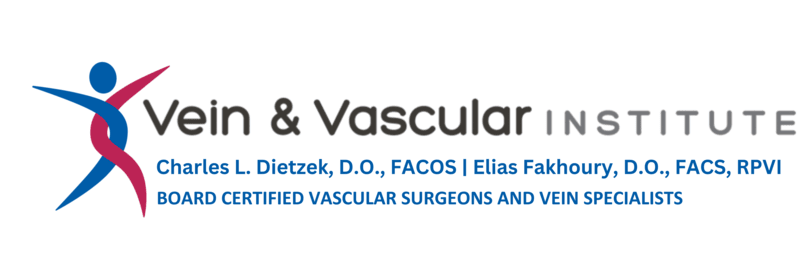DVT
DVT Rapid Response
Please click one of the tabs below

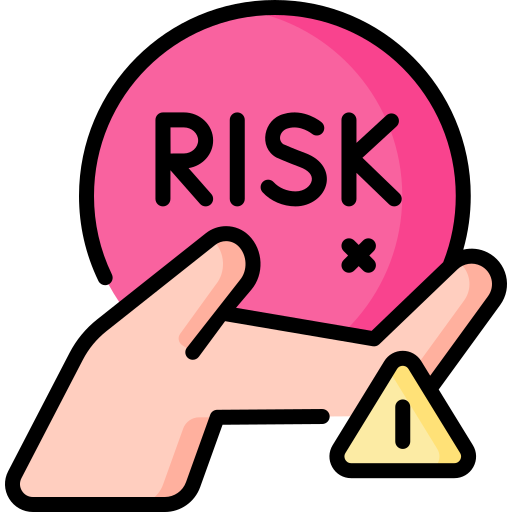

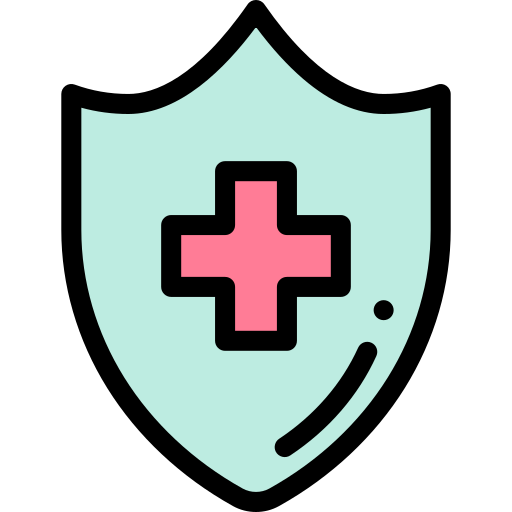

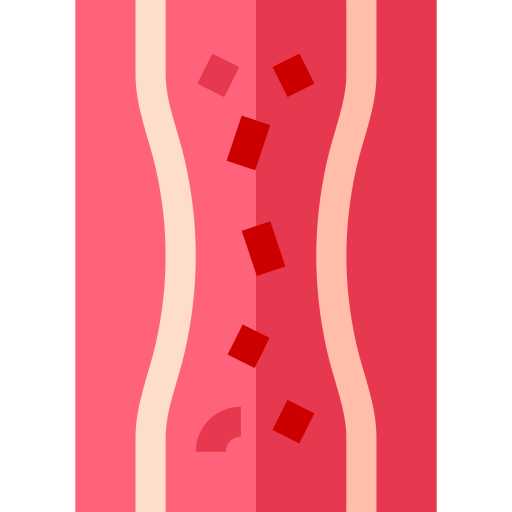
Deep Vein Thrombosis (DVT), also referred to as Venous Thromboembolism (VTE), is a condition where a blood clot forms in a deep vein, most commonly in the legs or, less frequently, in the arms. If left untreated, the clot can break loose and travel to the lungs, causing a pulmonary embolism (PE). This can be a life-threatening condition if the clot blocks blood flow in a major lung blood vessel. Immediate medical attention is then required.
DVT is a significant health concern, affecting over 900,000 people in the United States annually and contributing to an estimated 100,000 deaths each year.
At the Vein & Vascular Institute, we are dedicated to the prevention, diagnosis, and treatment of DVT. Our specialized Outpatient DVT Rapid Response Program ensures that patients receive timely care to reduce risks and achieve the best possible outcomes. Your health and safety are our top priorities.
Deep Vein Thrombosis (DVT) occurs when a blood clot blocks the flow of blood in a vein, often leading to noticeable symptoms. While some people may not experience any symptoms, common signs of DVT include:
- Throbbing pain in the leg or arm
- Swelling in one leg or arm
- Warm, tender skin in the affected area
- Purplish red discoloration leg or arm
If a DVT is left untreated, a portion of the clot may travel to the lungs, causing a pulmonary embolism (PE). This life-threatening condition can result in:
- Sudden shortness of breath
- Chest pain that may worsen with deep breathing
- Feeling lightheaded or dizzy
- Coughing up blood
- A rapid heartbeat
A pulmonary embolism is a medical emergency and requires immediate attention. You should go to an Emergency Room.
Superficial Vein Thrombosis (SVT) is a condition where a blood clot forms in veins near the surface of the skin. Like deep venous thrombosis, SVT most commonly occurs in the legs or, less frequently, in the arms. It often is diagnosed clinically and should be confirmed by an ultrasound.
This will allow confirmation there is no DVT component as well. SVT’s can cause symptoms very similar to DVT’s :
- Throbbing pain
- Swelling
- Inflammation skin surface veins with localized skin redness
- Induration (hardening) skin surface vein
Although complications from SVT are rare, it has been reported that up to 25% of SVT’s have a concurrent DVT. There are certain indications based on size and location of the superficial venous thrombus that require treatment with a blood thinner. Often patients are underdiagnosed and undertreated. VVI’s Board Certified Vascular Surgeon’s follow the latest diagnosis and treatment guidelines for both SVT and DVT.
Deep Vein Thrombosis (DVT) can happen to anyone, at any time, often without warning. Recognizing the symptoms and seeking prompt medical attention is crucial to preventing serious complications like pulmonary embolism.
DVTs are categorized as either provoked or unprovoked:
- Provoked clots have a clear trigger, such as recent trauma, surgery, or prolonged travel.
- Unprovoked clots occur without any identifiable cause.
Understanding the difference is essential, as it may affect treatment and long-term care.
- Sitting for extended periods during long-distance travel (3+ hours in a car or plane)
- Recent surgery (especially hip or knee replacements)
- Hospitalization or prolonged bed rest
- Recent trauma or injury
- Family history of blood clots
- Cancer and its treatments
- Use of hormone replacement therapy or oral contraceptives
- Pregnancy
- Smoking
- Recent COVID-19 infection
At the Vein & Vascular Institute, we are dedicated to helping you identify your risk factors and provide personalized care to prevent and treat DVT. If you think you may be at risk, contact us to schedule a consultation.
Preventing Deep Vein Thrombosis (DVT) starts with understanding your personal and family medical history to determine if you’re at risk. Recognizing the signs and symptoms early could save your life.
Here are some practical steps you can take to reduce your risk of developing a DVT:
- Stay active: Regular exercise and maintaining a healthy weight can improve circulation and lower your risk.
- Avoid prolonged sitting: If you’re sitting for long periods—such as during travel—make a point to get up and move every 1 to 2 hours.
- Wear compression stockings: Medical-grade compression socks are particularly helpful during long periods of inactivity, as they promote healthy blood flow.
- Stay hydrated: Drinking plenty of water daily keeps your blood vessels open and blood flowing smoothly.
- Talk to your doctor: If you’re concerned about your risk, speak with your healthcare provider about personalized prevention strategies.
If you or a loved one is experiencing symptoms of Deep Vein Thrombosis (DVT) or have risk factors for the condition, don’t wait—call the Vein & Vascular Institute.
Our friendly front desk staff will answer your call, address your concerns, and schedule an appointment with one of our specialists as soon as possible.
If you are experiencing symptoms of a pulmonary embolism, such as sudden shortness of breath, chest pain, or lightheadedness, call 911 immediately and go to the nearest emergency room. Prompt treatment is critical for your safety.
Your health is our priority—reach out to us today for expert care and peace of mind.
Did you know that 33% of patients experience a recurrent DVT within ten years of their first diagnosis? At the Vein & Vascular Institute, our Rapid DVT Program is designed not only for those recently diagnosed with DVT but also for those with a history of blood clots.
We provide accurate and timely diagnosis and treatment, but our commitment doesn’t end there.
We’re here to support you for the long term, offering education and resources to help you manage your health. Whether you’re a new patient or a DVT survivor, we aim to be a trusted resource for you and your family.
Reach out to us today to learn more about how we can support your journey toward long-term vascular health.
Nearly 50% of people who have had Deep Vein Thrombosis (DVT) may develop Post-Thrombotic Syndrome (PTS). This condition can cause long-term issues such as chronic swelling, pain, skin color changes or darkening (hyperpigmentation), and in some cases, venous ulcers or wounds.
At the Vein & Vascular Institute, our Board-Certified Vascular Surgeons will closely monitor you for any signs of PTS. If it develops, we offer in-office treatment options to help manage symptoms and improve your quality of life.
We’re here to provide ongoing care and support to help you maintain your vascular health long after a DVT diagnosis. Reach out to learn more about our comprehensive care approach.
What is Deep Vein Thrombosis (DVT)?
Deep Vein Thrombosis (DVT), also referred to as Venous Thromboembolism (VTE), is a condition where a blood clot forms in a deep vein, most commonly in the legs or, less frequently, in the arms. If left untreated, the clot can break loose and travel to the lungs, causing a pulmonary embolism (PE). This can be a life-threatening condition if the clot blocks blood flow in a major lung blood vessel. Immediate medical attention is then required.
DVT is a significant health concern, affecting over 900,000 people in the United States annually and contributing to an estimated 100,000 deaths each year.
At the Vein & Vascular Institute, we are dedicated to the prevention, diagnosis, and treatment of DVT. Our specialized Outpatient DVT Rapid Response Program ensures that patients receive timely care to reduce risks and achieve the best possible outcomes. Your health and safety are our top priorities.

Signs and Symptoms of DVT
Deep Vein Thrombosis (DVT) occurs when a blood clot blocks the flow of blood in a vein, often leading to noticeable symptoms. While some people may not experience any symptoms, common signs of DVT include:
- Throbbing pain in the leg or arm
- Swelling in one leg or arm
- Warm, tender skin in the affected area
- Purplish red discoloration leg or arm
If a DVT is left untreated, a portion of the clot may travel to the lungs, causing a pulmonary embolism (PE). This life-threatening condition can result in:
- Sudden shortness of breath
- Chest pain that may worsen with deep breathing
- Feeling lightheaded or dizzy
- Coughing up blood
- A rapid heartbeat
A pulmonary embolism is a medical emergency and requires immediate attention. You should go to an Emergency Room.
Is Superficial Venous Thrombosis (SVT) the same as DVT?
Superficial Vein Thrombosis (SVT) is a condition where a blood clot forms in veins near the surface of the skin. Like deep venous thrombosis, SVT most commonly occurs in the legs or, less frequently, in the arms. It often is diagnosed clinically and should be confirmed by an ultrasound.
This will allow confirmation there is no DVT component as well. SVT’s can cause symptoms very similar to DVT’s :
- Throbbing pain
- Swelling
- Inflammation skin surface veins with localized skin redness
- Induration (hardening) skin surface vein
Although complications from SVT are rare, it has been reported that up to 25% of SVT’s have a concurrent DVT. There are certain indications based on size and location of the superficial venous thrombus that require treatment with a blood thinner. Often patients are underdiagnosed and undertreated. VVI’s Board Certified Vascular Surgeon’s follow the latest diagnosis and treatment guidelines for both SVT and DVT.

Who is at Risk for a DVT?
Deep Vein Thrombosis (DVT) can happen to anyone, at any time, often without warning. Recognizing the symptoms and seeking prompt medical attention is crucial to preventing serious complications like pulmonary embolism.
DVTs are categorized as either provoked or unprovoked:
- Provoked clots have a clear trigger, such as recent trauma, surgery, or prolonged travel.
- Unprovoked clots occur without any identifiable cause.
Understanding the difference is essential, as it may affect treatment and long-term care.

Common Risk Factors for DVT Include:
- Sitting for extended periods during long-distance travel (3+ hours in a car or plane)
- Recent surgery (especially hip or knee replacements)
- Hospitalization or prolonged bed rest
- Recent trauma or injury
- Family history of blood clots
- Cancer and its treatments
- Use of hormone replacement therapy or oral contraceptives
- Pregnancy
- Smoking
- Recent COVID-19 infection
At the Vein & Vascular Institute, we are dedicated to helping you identify your risk factors and provide personalized care to prevent and treat DVT. If you think you may be at risk, contact us to schedule a consultation.

DVT Prevention
Preventing Deep Vein Thrombosis (DVT) starts with understanding your personal and family medical history to determine if you’re at risk. Recognizing the signs and symptoms early could save your life.
Here are some practical steps you can take to reduce your risk of developing a DVT:
- Stay active: Regular exercise and maintaining a healthy weight can improve circulation and lower your risk.
- Avoid prolonged sitting: If you’re sitting for long periods—such as during travel—make a point to get up and move every 1 to 2 hours.
- Wear compression stockings: Medical-grade compression socks are particularly helpful during long periods of inactivity, as they promote healthy blood flow.
- Stay hydrated: Drinking plenty of water daily keeps your blood vessels open and blood flowing smoothly.
- Talk to your doctor: If you’re concerned about your risk, speak with your healthcare provider about personalized prevention strategies.

What to Do if You Think You May Have a DVT
If you or a loved one is experiencing symptoms of Deep Vein Thrombosis (DVT) or have risk factors for the condition, don’t wait—call the Vein & Vascular Institute.
Our friendly front desk staff will answer your call, address your concerns, and schedule an appointment with one of our specialists as soon as possible.
If you are experiencing symptoms of a pulmonary embolism, such as sudden shortness of breath, chest pain, or lightheadedness, call 911 immediately and go to the nearest emergency room. Prompt treatment is critical for your safety.
Your health is our priority—reach out to us today for expert care and peace of mind.

Recently Diagnosed with a Blood Clot or Have a History of Blood Clots?
Did you know that 33% of patients experience a recurrent DVT within ten years of their first diagnosis? At the Vein & Vascular Institute, our Rapid DVT Program is designed not only for those recently diagnosed with DVT but also for those with a history of blood clots.
We provide accurate and timely diagnosis and treatment, but our commitment doesn’t end there.
We’re here to support you for the long term, offering education and resources to help you manage your health. Whether you’re a new patient or a DVT survivor, we aim to be a trusted resource for you and your family.
Reach out to us today to learn more about how we can support your journey toward long-term vascular health.
What is Post-Thrombotic Syndrome?
Nearly 50% of people who have had Deep Vein Thrombosis (DVT) may develop Post-Thrombotic Syndrome (PTS). This condition can cause long-term issues such as chronic swelling, pain, skin color changes or darkening (hyperpigmentation), and in some cases, venous ulcers or wounds.
At the Vein & Vascular Institute, our Board-Certified Vascular Surgeons will closely monitor you for any signs of PTS. If it develops, we offer in-office treatment options to help manage symptoms and improve your quality of life.
We’re here to provide ongoing care and support to help you maintain your vascular health long after a DVT diagnosis. Reach out to learn more about our comprehensive care approach.
More than 80 million people in the United States have problems with their veins, the vessels that return blood to the heart once it has circulated through the body. Many people suffering from venous disorders come to vascular surgeons looking for treatment to either relieve pain or improve the visible appearance due to diseased veins.
Veins have one-way valves that help keep blood flowing in the proper direction. If these valves stop functioning the way they are supposed to, blood can flow backwards and pool in the vein branches, causing them to stretch and become varicose veins. This condition is known as venous insufficiency.
These enlarged blood vessels fall into two groups: spider veins and varicose veins. Spider veins are visible on the surface of the skin as red, blue or purple lines. Varicose veins are larger and deeper and often look like bluish bumps under the skin.
Spider Veins
Spider veins are caused by a variety of factors, including heredity, pregnancy (and other conditions that involve changes in hormone levels), weight gain and long periods of standing and leg dependency. They often appear red or blue, and because they form on the face, thighs, calves and ankles, many patients are bothered by the way they look.
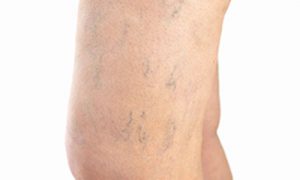
Others seek medical treatment for uncomfortable symptoms such as aching, burning, swelling and cramping. The standard treatments for spider veins are sclerotherapy and laser or pulsed light treatments.
Spider veins, or telangiectasias, are small, thin, blood vessels visible beneath the skin. They appear most commonly on the face and legs and may look like a series of lines, tree branches, or a spider- or web-like shape with a dark center. They serve no useful purpose in the body. It is estimated that they affect nearly half of adult women in the U.S.
Varicose Veins
Varicose veins typically serve no useful purpose in the body. They are swollen, dark blue or purple blood vessels that you can see and feel beneath the skin. They often look like twisted cords or may take a straight path under the surface of the skin. Varicosities usually appear on the calves, inside or on top of the thigh, and around the ankles.Varicose veins form when the valves within a vein weaken and allow some blood to flow backward. The vein weakens under the additional strain and balloons outward, raising the skin surface. Patients often complain of aching, heaviness, swelling, throbbing, itching, cramping, restless legs and general discomfort with standing or dependency. However, some rather large varicose veins remain asymptomatic. Correct treatment often takes care of the discomfort associated with the condition. Some people with varicose veins seek cosmetic treatment to reduce their appearance on the legs. Sometimes, however, more significant problems can develop if veins are left untreated. Some patients go on to develop swelling, skin discoloration or rash at the calves and ankles with eventual ulceration of the skin. This is due to the elevated pressure at the skin level veins in the lower leg.
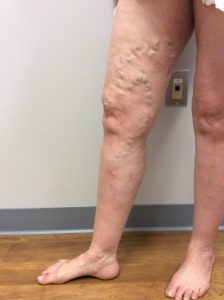 Treatment often takes care of the discomfort associated with the condition. Some people with varicose veins seek cosmetic treatment to reduce their appearance on the legs. Sometimes, however, more significant problems can develop if veins are left untreated. Some patients go on to develop swelling, skin discoloration or rash at the calves and ankles with eventual ulceration of the skin.
Treatment often takes care of the discomfort associated with the condition. Some people with varicose veins seek cosmetic treatment to reduce their appearance on the legs. Sometimes, however, more significant problems can develop if veins are left untreated. Some patients go on to develop swelling, skin discoloration or rash at the calves and ankles with eventual ulceration of the skin.
This is due to the elevated pressure at the skin level veins in the lower leg. Some enlarged varicose veins are prone to develop a superficial phlebitis which is a painful, firm clot in a varicose vein. In other cases veins can rupture and result in significant bleeding. For this reason, patients with varicose veins should be examined by a professional who specializes in vein treatment.
Reticular Veins

Also known as feeder veins, reticular veins are dilated veins that appear as blue or green lines under the skin, affecting as much as 80% of all adults. They are often large and unsightly and may lead to the development of spider veins in some patients. Some patients may experience tenderness, burning and itching in the legs, although these symptoms are considered rare.
These veins often develop as a result of genetic factors, but may also be caused by hormonal imbalances or weak veins. Although they do not often cause any painful symptoms or medical complications, many patients are bothered by the appearance of reticular veins and seek treatment to achieve clear, smooth skin.
Sclerotherapy is most often performed to treat reticular veins, while some cases can be treated with a miniphlebectomy, a less invasive alternative to sclerotherapy. Reticular veins should be treated before spider veins so as to prevent early recurrence of the spider veins. Your doctor will decide which treatment option is best for you after a thorough evaluation of your condition.
Deep Vein Thrombosis (DVT) is a condition that can occur when a blood clot forms in a deep vein of the body. DVT’s commonly are in the lower extremities, although they can occur in any deep vein within the body. DVT’s can occur spontaneously with an unknown etiology, but they are usually caused by lack of movement. Typical scenarios are a prolonged trip on a plane, car or train. It can also be caused by trauma.
Typical treatment for deep vein thrombosis may include blood thinners intravenously, subcutaneously or with oral medications. These medications prevent additional clot from forming. They do not dissolve the thrombus. In select cases “clot busting” medicine may be used to dissolve the clot.
The signs and symptoms of a deep vein thrombosis can include pain and/or swelling in the foot, ankle, calf or leg unexplained and is usually only in one extremity. There can be increased warmth to the skin and/or you can notice reddish-blue color changes to the skin of the extremity. Deep vein thrombosis can result in a pulmonary embolus, (PE). This is when the blood clot moves within the circulation and travel to the heart and lungs. This can be life threatening. If you have new onset leg pain, swelling and shortness of breath, you should seek medical attention immediately.
Episodes of DVT are diagnosed and monitored with non painful ultrasounds. After a few days of a new DVT, the clot adheres to the vein wall and the risk of PE diminishes. Swelling and discomfort may continue for months after a diagnosis of DVT.
Superficial venous thrombosis or thrombophlebitis (SVT) is when a blood clot called a thrombus develops in a vein located near the surface of the skin, usually in the leg. Superficial thrombophlebitis can occur spontaneously, especially in the lower extremities in the great saphenous vein, its branches or in varicose veins. It can also occur in veins following trauma or an intravenous. The etiology of SVT is frequently unknown, however it is more common to occur in varicose veins. These abnormal dilated varicose veins have blood stagnating within them which predisposes the blood to clot. This condition presents as redness and tenderness along the course of the vein, usually accompanied by swelling.
Foot, leg, and ankle swelling is also known as edema, which refers to an accumulation of fluid in this part of the body. The most common cause of ankle swelling is due to some degree of venous (circulation) or lymphatic damage.
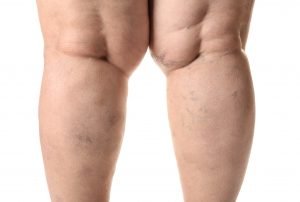
How we diagnose:
- Initial Consultation
- Assessment
- Ultrasound
- Treatment Plan
How we treat?
- Radiofrequency Ablation (Closurefast, Venclose)
- Compounded Sclerotherapy
- Micro-foam Sclerotherapy
- Non thermal Ablation (Venaseal)
People often get leg pain and aching due to circulation problems caused by blood clots, varicose veins or poor circulation.
How we diagnose:
- Initial Consultation
- Assessment
- Ultrasound
- Treatment Plan
How we treat:
- Radiofrequency Ablation (Closurefast, Venclose)
- Compounded Sclerotherapy
- Micro-foam Sclerotherapy
- Non thermal Ablation (Venaseal)
Leg heaviness, or a sensation of aching fatigue in the legs, can be due to multiple cause including muscular disorders, joint issues, and circulatory disorders. A very common cause is venous insufficiency, or vein disease.
How we diagnose:
- Initial Consultation
- Assessment
- Ultrasound
- Treatment Plan
How we treat:
- Radiofrequency Ablation (Closurefast, Venclose)
- Compounded Sclerotherapy
- Micro-foam Sclerotherapy
- Non thermal Ablation (Venaseal)
Cramping is often thought to be caused by deficiency of potassium or dehydration, while true this is not the most common cause. Most people who have reoccurring day or night leg cramps have a circulation problem.
How we diagnose:
- Initial Consultation
- Assessment
- Ultrasound
- Treatment Plan
How we treat:
- Radiofrequency Ablation (Closurefast, Venclose)
- Compounded Sclerotherapy
- Micro-foam Sclerotherapy
- Non thermal Ablation (Venaseal)
Restless leg, an uncontrollable urge to move your leg, is very often caused by leg circulation problems. Medication is often prescribed which tends to mask the actual problem.
How we diagnose:
- Initial Consultation
- Assessment
- Ultrasound
- Treatment Plan
How we treat:
- Radiofrequency Ablation (Closurefast, Venclose)
- Compounded Sclerotherapy
- Micro-foam Sclerotherapy
- Non thermal Ablation (Venaseal)
Leg burning or itching is often due to poor blood flow to the skin and oil glands. This is a very common symptom of a circulation problem.
How we diagnose:
- Initial Consultation
- Assessment
- Ultrasound
- Treatment Plan
How we treat:
- Radiofrequency Ablation (Closurefast, Venclose)
- Compounded Sclerotherapy
- Micro-foam Sclerotherapy
- Non thermal Ablation (Venaseal)
